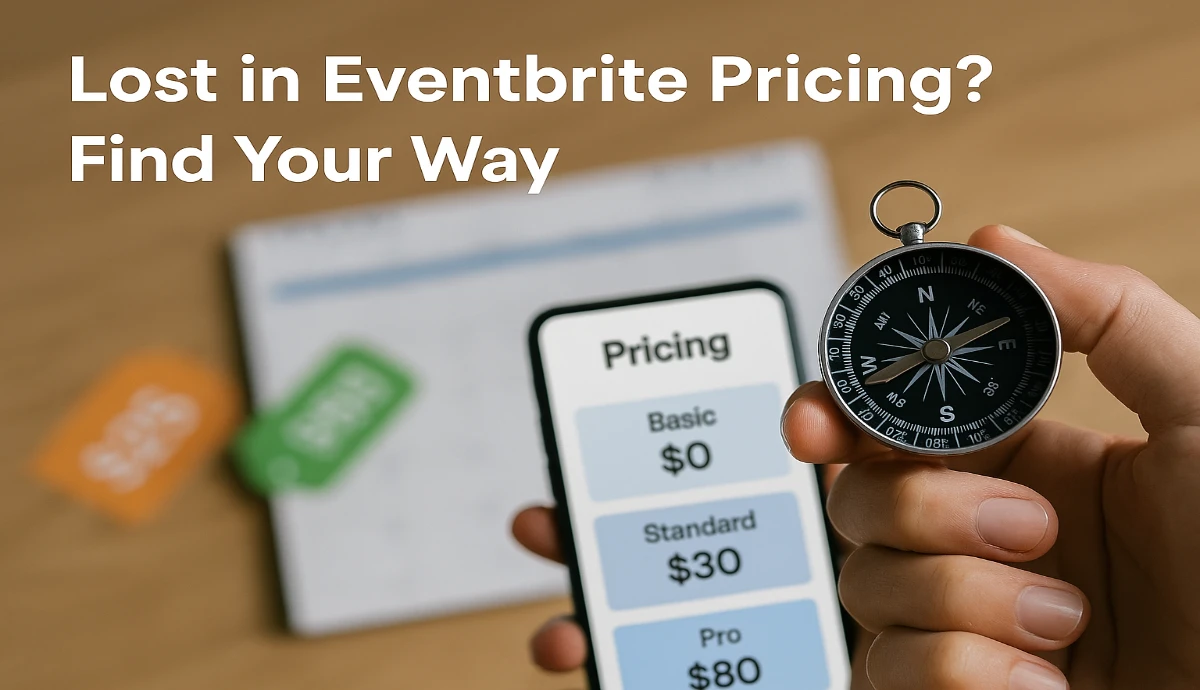You are probably planning on organizing an event soon. It could be a workshop, seminar, conference, or even an informal event.
You have prepared a list of guests to be invited. And you want as many of them as possible to turn up for the event.
Plus, as an event organizer, you want to keep an eye on the event footfall. That means you want to track event performance or attendance. So you are looking for easy, effective, and affordable ways to do it.
For your convenience, here is an exhaustive list of event management best practices. They will help you resolve all the problems.
But before we discuss various ways to get the job done, let?s see why is tracking event attendance is important in the first place.
A. Why event attendance tracking is important
By tracking event attendance, you get an idea about the footfall at your event. You can then gauge what was your expected footfall and how many people actually turned up.
This data can provide you valuable insights while estimating your ROI or conversions (event attendance here).
Also, with this data in hand, you can know if the results meet your expectations or not. Hence, you can work to make changes to optimize your future events accordingly.
While you know why event attendance tracking is important, you want to explore various ways to do it. Keep reading to know about them.
B. How can event attendance be tracked
Figuring out how to effectively track event attendance can seem like a daunting task. But fret not! There are a variety of methods to do so. Let's dive into them:
1. The manual approach
For simple, straightforward event attendance tracking, many event coordinators opt for attendance sheets to maintain records. These sheets usually include the names of all attendees.
Once you reach the venue, you report to one of the coordinators to get your presence marked.

Now, this is the simplest way to keep an eye on the attendance record. Coordinators need to simply mark present against the invitees who report to them. Or at most, they just need to mention the time of reporting.
Since it is no brain game, you do not need to impart any training. But here is the thing this process is highly prone to inaccuracies.
In addition, since manually writing down things takes time, this method is slow. Hence, it often leads to guests waiting in long queues at the entry gate. Now since that is not really good experience for the guests, you would want to avoid it.
But to do it, you will have to hire many coordinators to get the job done faster. As the number of coordinators will increase, so will your hiring costs.
So, while the manual method is simple, it may not be the most efficient or accurate approach to tracking event attendance.
2. The digital approach
Digital methods, in contrast, often provide a more accurate and efficient approach to conference attendance tracking. They are usually faster and help you keep guests from waiting in queues to enter the event.
And one of the most effective ways to do it is via event tickets. Yes, you read that right.
You do hand out tickets to the invitees to be shown at the venue, right? That is how you check whether it is a valid or an invalid entry.
But did you know that these tickets can also help you keep a record of the event attendance? Yes, it's possible. Using the Ticket Generator tool for a demo, here's how you can do it.
C. Tracking attendance with ticket
In one of our previous articles, we have talked about event tickets that help you authenticate entries. These tickets come with event details such as event name, date, timings, venue, description, and a QR Code.

Coordinators need to scan the QR Code on these tickets at the entry gate. And they get to know if the ticket is valid, invalid, or duplicate. That leaves no room for duplication of tickets and unauthorized entries.
Also, you do not need to install any cost-intensive set-up to scan the QR Code. Unlike barcodes that require handheld scanners, QR Codes can be scanned simply with smartphones.
All that you need is tickets and the Ticket Validator app installed on each coordinator's phone. That simple.
Besides making the entries secure, these tickets also help you track attendance. That means each time a coordinator scans the QR Code to authorize entry, the attendance data is recorded.
Here is what all data you get to monitor:
1. Attendance by time period
It tells you the time when the tickets were scanned. You can obtain this data both on an hourly basis or even based on days.
2. Tickets validated per coordinator
You would often have more than one coordinator validating the tickets. And the Ticket Generator helps you track which coordinator has tracked how many tickets.
3. Data on valid entries
With this option, you get to know the number of valid, invalid, and duplicate entry tickets.
4. Duplicate and re-entry count
Say a person among the invitees manages to get hold of the original ticket. And he creates a duplicate ticket to get event entry.
At the venue, the invitee shows you the ticket, you scan it and see it's a valid ticket. So you grant her entry.
Now the person with duplicate ticket comes in. Here, once you scan the QR Code, it will prompt a duplicate entry.
You can then decide if you want to grant him entry to the event or not. To know more about it, you can go through this detailed guide.
Using the Duplicate and Re-entry Count option, you can gather data on such entries.
While you can see all this data online, you can also download it in CSV file.
Now that you know how you can track event attendance, the next question is
D. How to set-up attendance tracking
You will need ticket management software to set up attendance tracking for your event. Using the Ticket Generator tool for a demo, here's a detailed step-by-step guide on how to do it:
1. Create event tickets
The first step is obviously to create event tickets. To do this, go to Ticket Generator and do a quick sign-up. Once you do it, you can create tickets with all the details.
To do this, go to Create New Event option and start creating your event by adding details such as event name, description, venue, and date. And you can even add guest-specific details such as seat number and hall number allotted to the invitee.

Next, you can choose if you want to download the tickets once you create them or mail them directly to the guests.
Choose whichever option you want and go ahead to design your tickets.
If you have a readymade design template, you can simply upload the design. And then add QR Code and ticket ID to it. Or you can design ticket from scratch by adding a logo and background to it.
Here's a detailed guide on how to create event tickets.
2. Hand-out the tickets
Once you create and customize the tickets, the next step is to send them. One of the options is to print PDFs of your ticket and hand them out to the invitees.
Or you can also send them to your guests directly via email, SMS, or both.
Furthermore, you can also integrate your registration system with ticket generation via an API. To know more about it, here's a detailed guide.
3. Validate entries
Now that you have created and distributed the tickets, the next step is to validate them at the event. To do it, you will have to get each coordinator to install the Tickets Validator app on their phones. You can get its link from the Ticket Validator App option on the dashboard.
Once you start validating them, the tool will start gathering attendance data.
4. Track event attendance
The final step is to see your event analytics. With the Ticket Generator, here's how you can get this data:
a. From the Ticket Generator dashboard, go to Manage Event
b. On the page that loads, select the event you want to track the attendance data for
c. Next, on the right, you will see the option of View details, click it.
d. On the landing page, click on Track Analytics, you will get all the data on the event attendance. First will be the percentage of people who have attended the event. Here, you will also be able to see when does the event end and the Event Status
On scrolling down, you will see different sections with event attendance based on various parameters. These include:
i. Attendance by time period
ii. Tickets validated per coordinator
iii. Used, new, expired, and invalid tickets
iv. Duplicate and re-entry allowed counts
With each of these sections, you will see the Download CSV icon. You can click it to download the attendance data for whichever section you want.
That's it. You now know everything about tracking event attendance. From creating the tickets and distributing them to validating entries and monitoring analytics, it's an easy and effective method.
Also, scanning a QR Code does not take more than 2-3 seconds. Hence, you can easily keep your guests from waiting in long queues. And rather, provide them a smooth check-in system.
Conclusion
In conclusion, tracking event attendance is no longer a Herculean task burdened with inaccuracies and inefficiencies. The adoption of digital methods, particularly the Ticket Generator tool, allows for accurate, efficient, and detailed record-keeping.
Event organizers can use this data to optimize future events, providing guests with a smoother, quicker check-in system, and ultimately enhancing their event experience.
Invest the time in creating a streamlined attendance tracking system and see firsthand the impact it can have on your event's success.
So go ahead, sign up for the Ticket Generator tool today, and transform your event management process for the better!





.gif)





